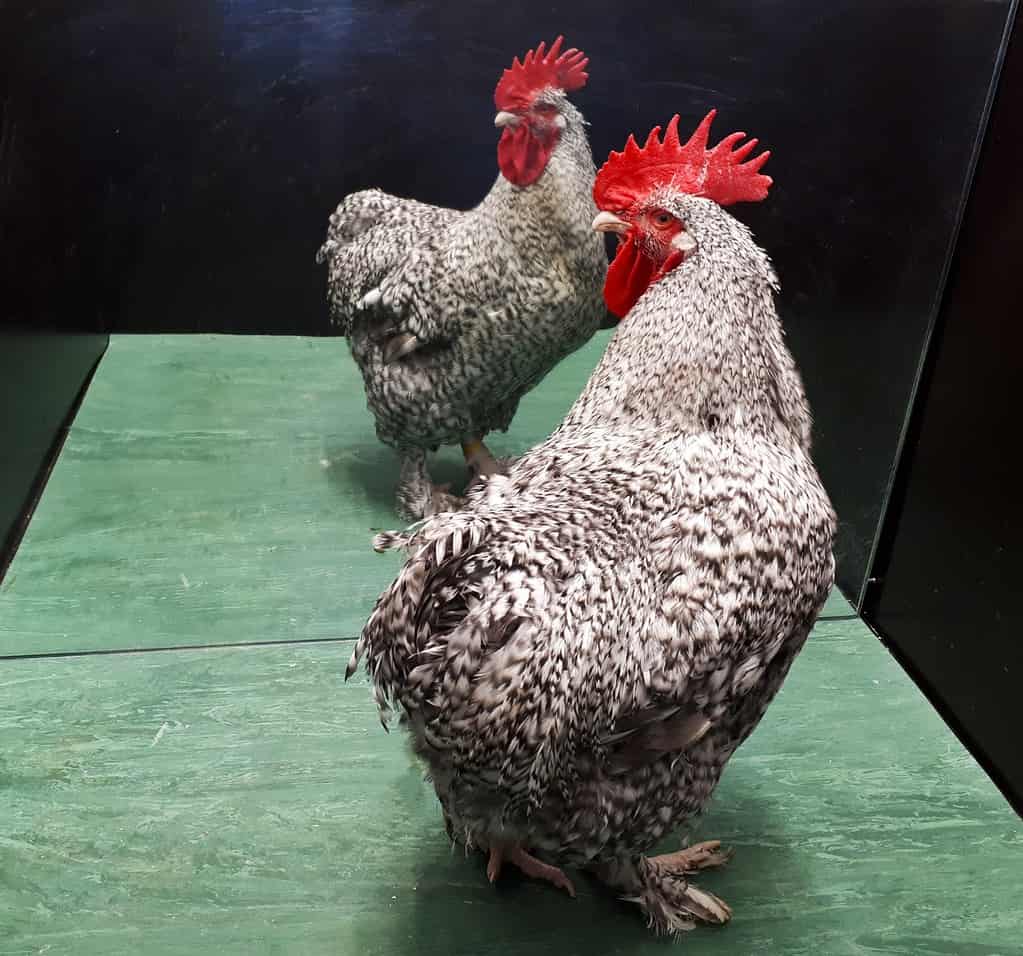An international team of neuroscientists and psychologists have found evidence that roosters could recognize themselves in the mirror. However, whether this is successful, depends on the experimental conditions — a finding that goes beyond the experiment with roosters and could be important for other animal species, the researchers said.

Mirror self-recognition (MSR) is often considered a signature of self-awareness and thus constitutes a unique window into the animal’s mind. Studies have shown this ability isn’t necessarily a human feature but instead seems to be present in some great apes, bottlenose dolphins, Asian elephants, Eurasian magpies, and cleaning wrasses. In fact, it’s debated just how many other animals can pass the mirror test.
The ability of chickens to show MSR isn’t a surprise when considering their social context. Chicken use complex cognitive strategies that have elements of perspective-taking. They live in a close-knit community with complex, dynamic and stringent pecking orders, which require the ability to learn about positions in a hierarchy. But it wasn’t exactly clear that chicken would be able to pass this test, either.
“Whether animals can recognize themselves and thus have self-awareness is one of the central questions in behavioral research,” Sonja Hillemacher, a doctoral student and study author, said in a news release. Hillemacher has been investigating with Inga Tiemann the husbandry of chickens at the Institute of Agricultural Engineering at the University of Bonn.
The Mark Test
One of the most common tests for self-recognition is the Mark Test. For example, a colored mark is placed on the front of the animal’s head that the individual can only see if they are in front of a mirror. If the animal starts exploring the marked area on its body in front of the mirror, this is considered proof that it has recognized its own reflection.
However, this test doesn’t always work. Many animals don’t have arms, hands or fingers that could be used to respond to a mark on a part of the body if noticed in a mirror. Even some animals that are believed to be self-aware take no notice of the mirror. That’s why the researchers came up with a new way to test self-recognition.
“Some chickens, but especially roosters, warn their conspecifics by special calls when a predator — such as a bird of prey or fox — appears,” Onur Güntürkün, study author, said in a news release. On the other hand, if the rooster is confronted with the predator alone, they remain silent to avoid attracting its attention and becoming its victim.
The alarm call was then the perfect behavior to integrate into a test of self-awareness for roosters, the researchers said. First, they wanted to check whether the rooster really emits alarm calls in the presence of a conspecific (another rooster) and remains silent when they are alone. For this, they set up an area on the Campus of the University of Bonn.
A grid divided two enclosures, allowing the roosters to maintain visual contact with each other through the grid. Then, a raptor (bird) image was displayed on the ceiling of one of the enclosures. The researchers tested 58 roosters. In total, the roosters emitted 77 alarm calls in the presence of a conspecific — although only 17 occurred when the rooster was alone with the threat.
The researchers then placed a mirror between the two compartments instead of the grid. In all, only 25 alarm calls were emitted during 174 trials. The result indicates that the roosters likely recognized themselves in the mirror image. There’s also the chance that they saw in their image a strange animal that mimics their own behavior.
This shows that the mirror-mark test gives more reliable results when the behavior of a species is embedded into an ecologically relevant context. “In the classical situation, a rooster may not show self-recognition. But when a predator threatens him, it becomes clear that his reflection is not another rooster, but himself,” Güntürkün said.
The study was published in the journal PLOS ONE.






